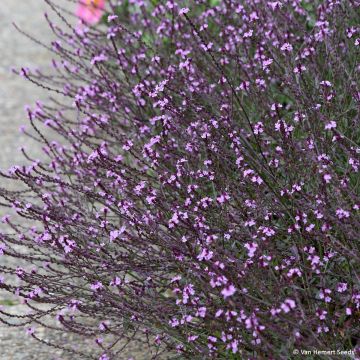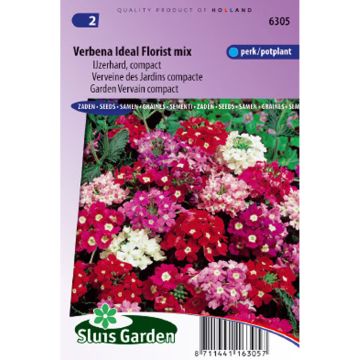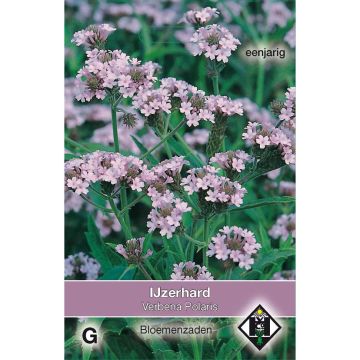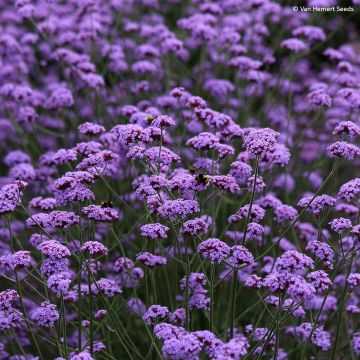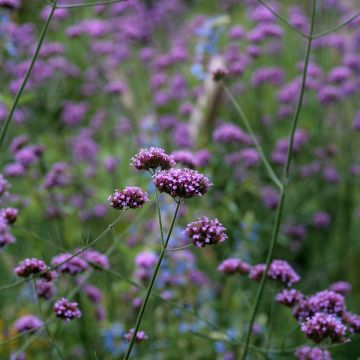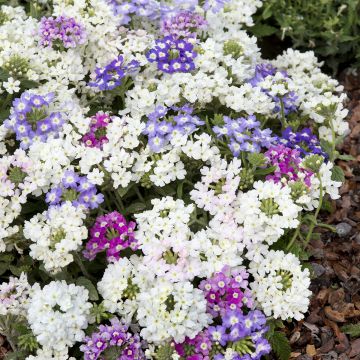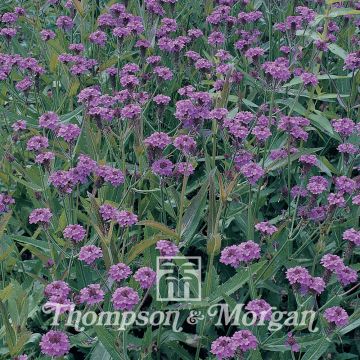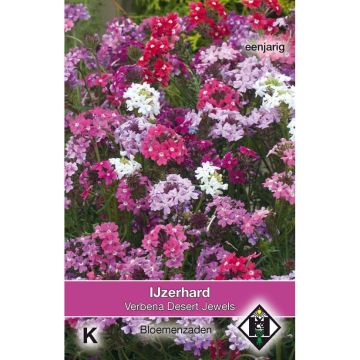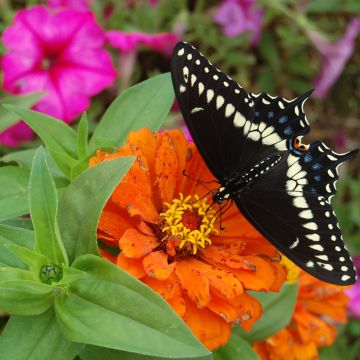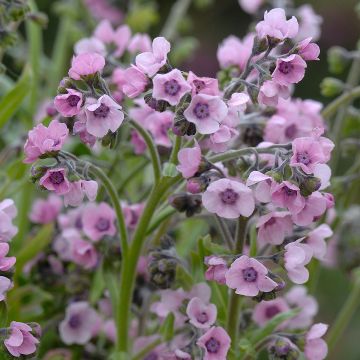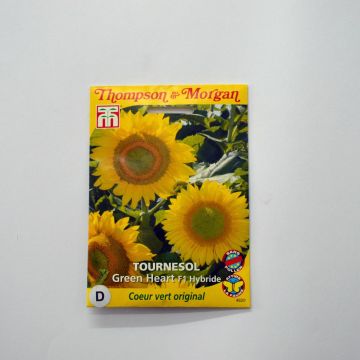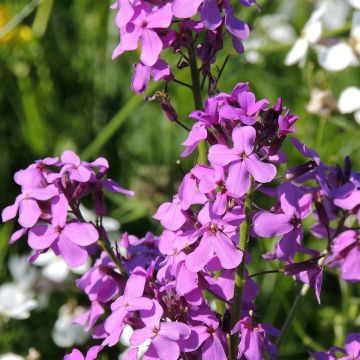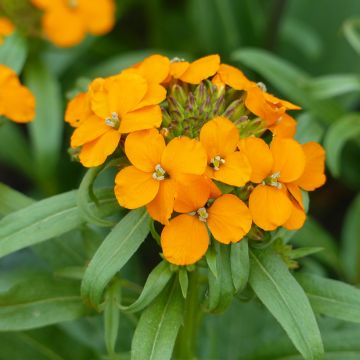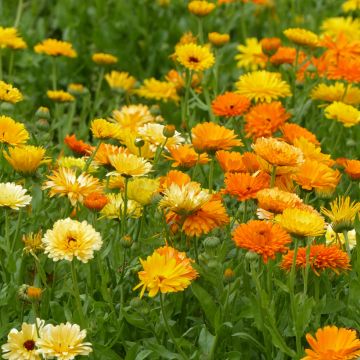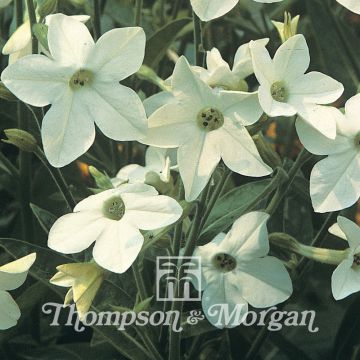

Verbena Scentsation White seeds
Verbena Scentsation White seeds
Verbena x hybrida Scentsation White
Garden Verbena, Common Verbena, Hybrid Verbena
This item cannot be shipped to the selected country
Dispatch by letter from €3.90
More information
Schedule delivery date,
and select date in basket
This plant carries a 6 months recovery warranty
More information
We guarantee the quality of our plants for a full growing cycle, and will replace at our expense any plant that fails to recover under normal climatic and planting conditions.
Seed-only orders are dispatched by sealed envelope. The delivery charge for seed-only orders is €3.90.
Does this plant fit my garden?
Set up your Plantfit profile →
Description
The Annual Verbena Scentsation White is a Verbena x hybrida with a sweet and light fragrance, especially in the warm and humid air of summer. It offers very bright pure white flowers. This Garden Verbena with large flowers is lovely in scented mixed bouquets in the house, after adorning borders, hanging baskets and pots. Vigorous, resistant and floriferous, it produces masses of flowers all summer long.
Originating from South America and belonging to the Verbena family, Verbena x hybrida is, as its name indicates, the result of hybridisation. It bears finely cut flowers, arranged in umbels, like small flat clusters of 6 to 8 cm, with colours varying according to the varieties. Its leaves are finely cut, sometimes lobed and of a beautiful medium green. It is a nectar-rich plant that is very attractive to butterflies. The Garden Verbena Scentsation White has a compact habit, reaching a height of 25 cm and a width of 30 cm.
Highly appreciated for their generous flowering and vibrant colours, Garden Verbenas, also known as Verbena hortensis, are perennial plants with low hardiness. A drawback largely compensated by their ease of cultivation and the length of their flowering period which extends from June to September. They are versatile and will find their place in borders, flowerbeds or even in pots where they are grown as annuals. You can easily associate them, in a flowerbed or in a pot, with Diascias, Ornamental Tobacco. Garden Verbenas thrive in the sun, in rich, well-drained soil. In a planter, make sure not to provide too much nitrogen fertiliser, which would promote foliage growth at the expense of flowers.
Garden Verbena are easy to grow but may occasionally be susceptible to fungal diseases (Mildew, Powdery Mildew), a nuisance that can easily be avoided by not planting it in a confined area and taking care not to wet its foliage during watering. It is also important to watch out for possible attacks by red spiders, thrips, and slugs. To encourage and support its long flowering period, remember to regularly remove faded flowers.
Report an error about the product description
Flowering
Foliage
Plant habit
Botanical data
Verbena
x hybrida
Scentsation White
Verbenaceae
Garden Verbena, Common Verbena, Hybrid Verbena
Cultivar or hybrid
Other Verbena seeds
Planting and care
Sow Scentsation White from February to April, in a seed tray or directly in pots filled with a good seed compost kept slightly moist. Do not cover the seeds. Place the container in the light, in a warm spot that you will maintain at 24-27°C. Germination usually takes 14 to 21 days. When the young plants are sturdy enough to handle, transplant if necessary into a pot, then gradually acclimatise the young plants to outdoor conditions before planting them in the garden with a spacing of 35 cm.
Sowing period
Intended location
This item has not been reviewed yet - be the first to leave a review about it.
Flower seeds
Haven't found what you were looking for?
Hardiness is the lowest winter temperature a plant can endure without suffering serious damage or even dying. However, hardiness is affected by location (a sheltered area, such as a patio), protection (winter cover) and soil type (hardiness is improved by well-drained soil).

Photo Sharing Terms & Conditions
In order to encourage gardeners to interact and share their experiences, Promesse de fleurs offers various media enabling content to be uploaded onto its Site - in particular via the ‘Photo sharing’ module.
The User agrees to refrain from:
- Posting any content that is illegal, prejudicial, insulting, racist, inciteful to hatred, revisionist, contrary to public decency, that infringes on privacy or on the privacy rights of third parties, in particular the publicity rights of persons and goods, intellectual property rights, or the right to privacy.
- Submitting content on behalf of a third party;
- Impersonate the identity of a third party and/or publish any personal information about a third party;
In general, the User undertakes to refrain from any unethical behaviour.
All Content (in particular text, comments, files, images, photos, videos, creative works, etc.), which may be subject to property or intellectual property rights, image or other private rights, shall remain the property of the User, subject to the limited rights granted by the terms of the licence granted by Promesse de fleurs as stated below. Users are at liberty to publish or not to publish such Content on the Site, notably via the ‘Photo Sharing’ facility, and accept that this Content shall be made public and freely accessible, notably on the Internet.
Users further acknowledge, undertake to have ,and guarantee that they hold all necessary rights and permissions to publish such material on the Site, in particular with regard to the legislation in force pertaining to any privacy, property, intellectual property, image, or contractual rights, or rights of any other nature. By publishing such Content on the Site, Users acknowledge accepting full liability as publishers of the Content within the meaning of the law, and grant Promesse de fleurs, free of charge, an inclusive, worldwide licence for the said Content for the entire duration of its publication, including all reproduction, representation, up/downloading, displaying, performing, transmission, and storage rights.
Users also grant permission for their name to be linked to the Content and accept that this link may not always be made available.
By engaging in posting material, Users consent to their Content becoming automatically accessible on the Internet, in particular on other sites and/or blogs and/or web pages of the Promesse de fleurs site, including in particular social pages and the Promesse de fleurs catalogue.
Users may secure the removal of entrusted content free of charge by issuing a simple request via our contact form.
The flowering period indicated on our website applies to countries and regions located in USDA zone 8 (France, the United Kingdom, Ireland, the Netherlands, etc.)
It will vary according to where you live:
- In zones 9 to 10 (Italy, Spain, Greece, etc.), flowering will occur about 2 to 4 weeks earlier.
- In zones 6 to 7 (Germany, Poland, Slovenia, and lower mountainous regions), flowering will be delayed by 2 to 3 weeks.
- In zone 5 (Central Europe, Scandinavia), blooming will be delayed by 3 to 5 weeks.
In temperate climates, pruning of spring-flowering shrubs (forsythia, spireas, etc.) should be done just after flowering.
Pruning of summer-flowering shrubs (Indian Lilac, Perovskia, etc.) can be done in winter or spring.
In cold regions as well as with frost-sensitive plants, avoid pruning too early when severe frosts may still occur.
The planting period indicated on our website applies to countries and regions located in USDA zone 8 (France, United Kingdom, Ireland, Netherlands).
It will vary according to where you live:
- In Mediterranean zones (Marseille, Madrid, Milan, etc.), autumn and winter are the best planting periods.
- In continental zones (Strasbourg, Munich, Vienna, etc.), delay planting by 2 to 3 weeks in spring and bring it forward by 2 to 4 weeks in autumn.
- In mountainous regions (the Alps, Pyrenees, Carpathians, etc.), it is best to plant in late spring (May-June) or late summer (August-September).
The harvesting period indicated on our website applies to countries and regions in USDA zone 8 (France, England, Ireland, the Netherlands).
In colder areas (Scandinavia, Poland, Austria...) fruit and vegetable harvests are likely to be delayed by 3-4 weeks.
In warmer areas (Italy, Spain, Greece, etc.), harvesting will probably take place earlier, depending on weather conditions.
The sowing periods indicated on our website apply to countries and regions within USDA Zone 8 (France, UK, Ireland, Netherlands).
In colder areas (Scandinavia, Poland, Austria...), delay any outdoor sowing by 3-4 weeks, or sow under glass.
In warmer climes (Italy, Spain, Greece, etc.), bring outdoor sowing forward by a few weeks.

































